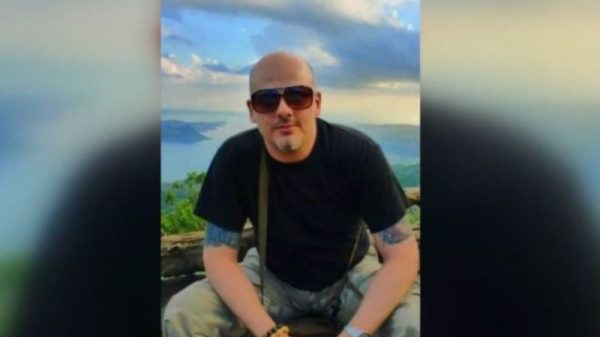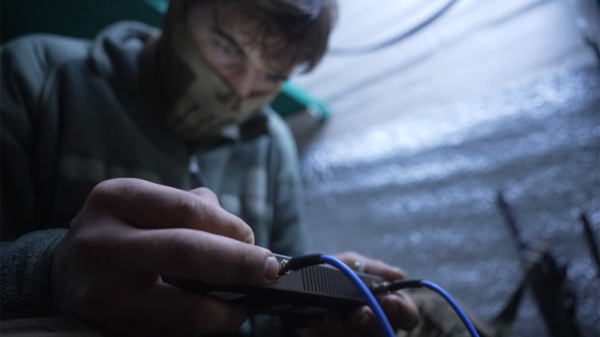Scientists have created tiny living robots from human cells that can move around in a lab dish and may one day be able to help heal wounds or damaged tissue, according to a new study.
A team at Tufts University and Harvard University’s Wyss Institute have dubbed these creations anthrobots. The research builds on earlier work from some of the same scientists, who made the first living robots, or xenobots, from stem cells sourced from embryos of the African clawed frog (Xenopus laevis).
“Some people thought that the features of the xenobots relied a lot on the fact that they are embryonic and amphibian,” said study author Michael Levin, Vannevar Bush professor of biology at Tufts’ School of Arts & Sciences.
“I don’t think this has anything to do with being an embryo. This has nothing to do with being a frog. I think this is a much more general property of living things,” he said.
“We don’t realize all the competencies that our own body cells have.”
While alive, the anthrobots were not full-fledged organisms because they didn’t have a full life cycle, Levin said.
“It reminds us that these harsh binary categories that we’ve operated with: Is that a robot, is that an animal, is that a machine? These kinds of things don’t serve us very well. We need to get beyond that.”
The research was published Thursday in the journal Advanced Science.
How did they make them?
The scientists used adult human cells from the trachea, or windpipe, from anonymous donors of different ages and sexes. Researchers zeroed in on this type of cell because they’re relatively easy to access due to work on Covid-19 and lung disease and, more importantly, because of a feature the scientists believed would make the cells capable of motion, said study coauthor Gizem Gumuskaya, a doctoral student at Tufts.
The tracheal cells are covered with hairlike projections called cilia that wave back and forth. They usually help the tracheal cells push out tiny particles that find their way into air passages of the lungs. Earlier studies had also shown that the cells can form organoids — clumps of cells widely used for research.
Gumuskaya experimented with the chemical composition of the tracheal cells’ growth conditions and found a way to encourage the cilia to face outward on the organoids. Once she had found the right matrix, the organoids became mobile after a few days, with the cilia acting a bit like oars.
“Nothing happened on day one, day two, day four or five, but as biology usually does, around day seven, there was a rapid transition,” she said. “It was like a blossoming flower. By day seven, the cilia had flipped and were on the outside.
“In our method, each anthrobot grows from a single cell.”
It’s this self-assembly that makes them unique. Biological robots have been made by other scientists, but they were constructed by hand by making a mold and seeding cells to live on top of it, Levin said.
Different shapes and sizes
The anthrobots the team created weren’t identical.
Some were spherical and fully covered in cilia, while others were shaped more like a football and covered irregularly with cilia. They also moved in different ways — some in straight lines, some in tight circles, while others sat around and wiggled, according to a news release on the study. They survived up to 60 days in laboratory conditions.
The experiments outlined in this latest study are at an early stage, but the goal is to find out whether the anthrobots could have medical applications, Levin and Gumuskaya said. To see whether such applications might be possible, researchers examined whether the anthrobots were able to move over human neurons grown in a lab dish that had been “scratched” to mimic damage.
They were surprised to see the anthrobots encouraged growth to the damaged region of the neurons, although the researchers don’t yet understand the healing mechanism, the study noted.
Falk Tauber, a group leader at the Freiburg Center for Interactive Materials and Bioinspired Technologies at the University of Freiburg in Germany, said that the study provided a baseline for future efforts to use the bio-bots for different functions and make them in different forms.
Tauber, who was not involved in the research, said the anthrobots exhibited “surprising behavior,” in particular when they moved across — and ultimately closed —scratches in the human neurons.
He said the ability to create these structures from a patient’s own cells suggested diverse applications both in the lab and perhaps ultimately within humans.
Levin said he didn’t think the anthrobots posed any ethical or safety concerns. They are not made from human embryos, research that is tightly restricted, or genetically modified in any way, he said.
“They have a very circumscribed environment that they live in, so there’s no possibility that they somehow get out or live outside the lab. They can’t live outside that very specific environment,” he said. “They have a natural life span so after a few weeks, they just seamlessly biodegrade.”







































